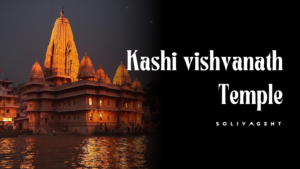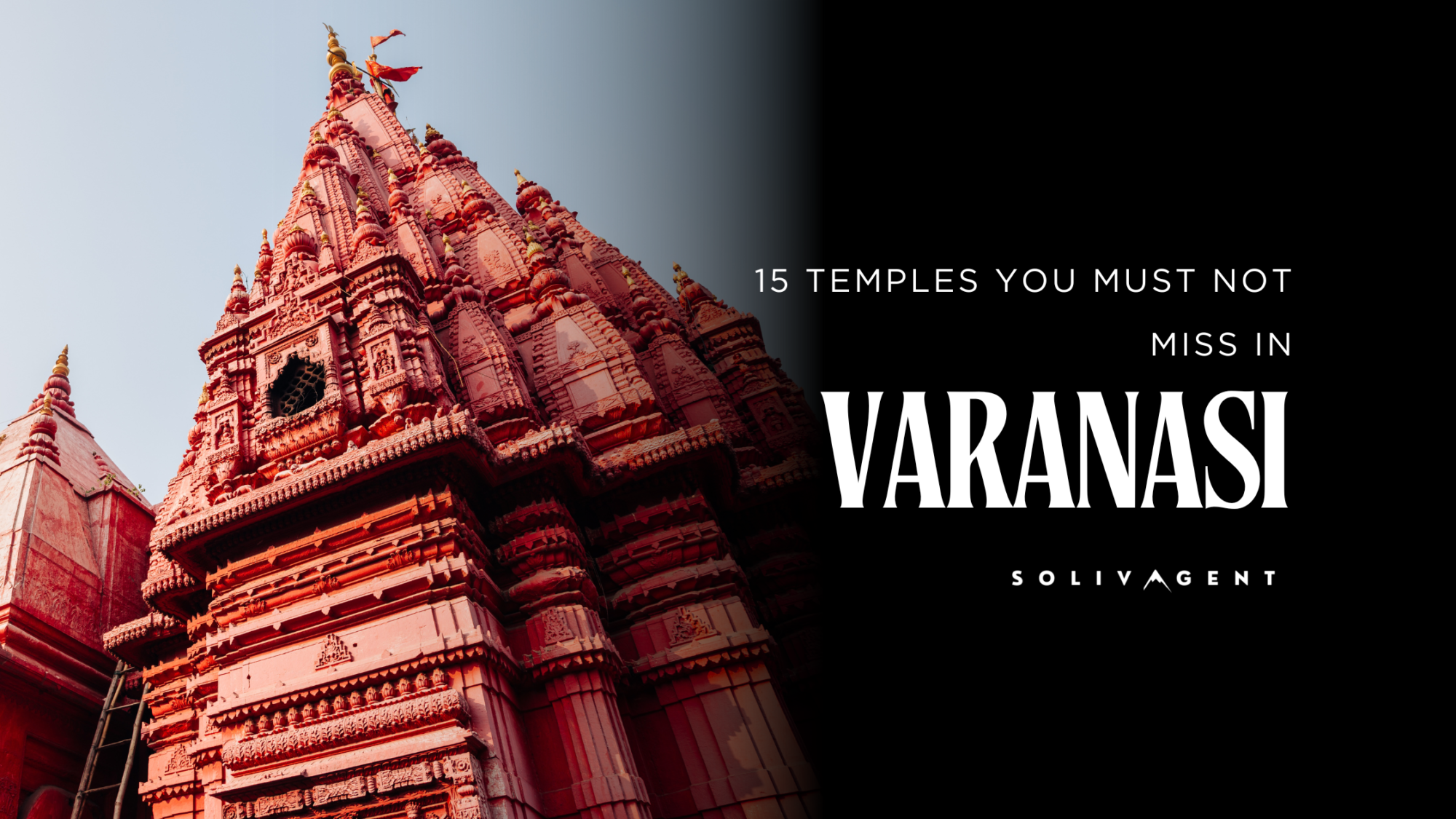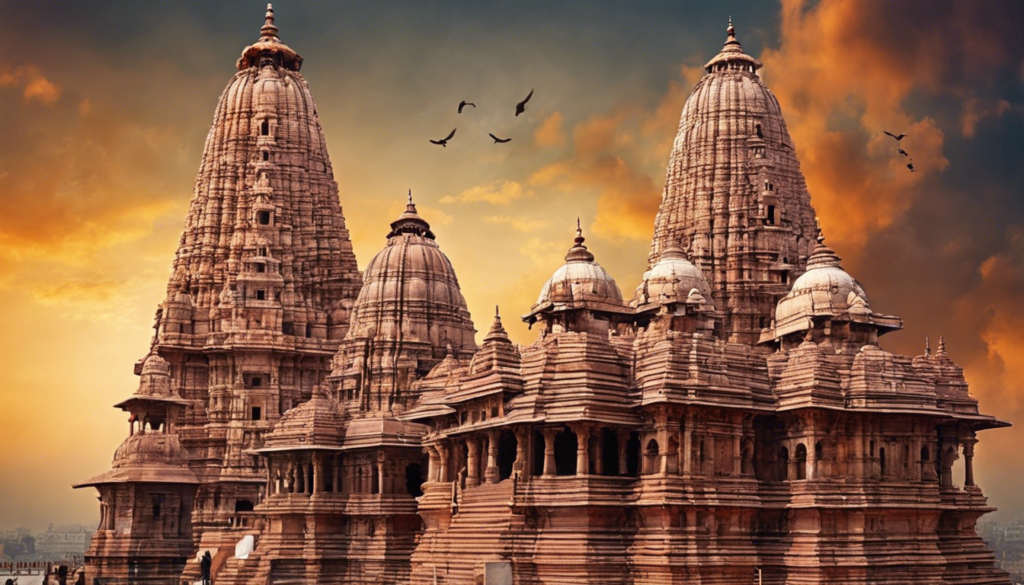
Forget gilded palaces and grand monuments. Temples in Varanasi, the divine abode- where god resides in every alley, whispers in the gurgling Ganga, and dances on the vibrant ghats.
Temples in Varanasi aren’t just grand structures, they’re the beating heart of a city ancient as time, where life and death mingle in the scent of burning incense and the echo of a thousand chants.
This isn’t a pilgrimage; it’s a dive into the kaleidoscope of faith. Picture saffron-clad sadhus whispering mantras, monkeys flitting through sun-dappled courtyards, and bells chiming a rhythm older than the stones they’re carved into.
We’ll weave through narrow lanes, past shrines tucked away like secrets, and discover deities both familiar and fantastical.
Come, let’s lose ourselves in the labyrinthine embrace, where temples in Varanasi tell stories and every step feels like a whispered prayer.
Ready to trade tourist traps for timeworn testaments to faith? Then lace up your walking shoes and grab your chai; it’s time to unlock the secrets of Varanasi’s whispering temples.
Table of Contents
15 Temples in Varanasiu Must Not Miss
Kashi Vishwanath Temple: One of the most Important Temples in Varanasi
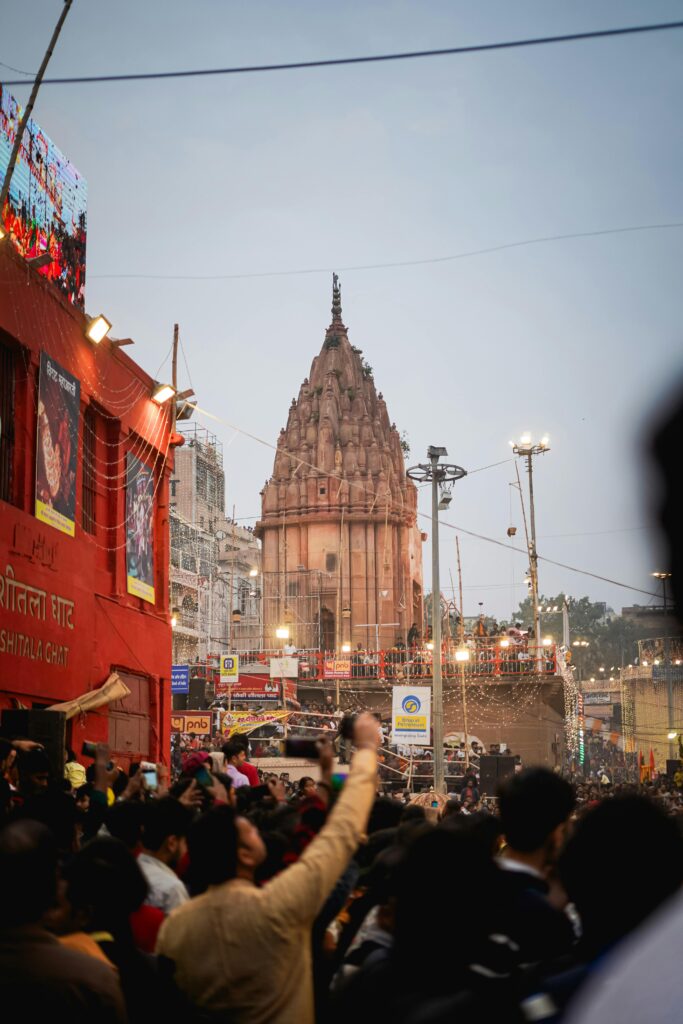
No Varanasi tale is complete without bowing before the Kashi Vishwanath. Gleaming like a beacon on the holy Ganga, this 18th-century marvel isn’t just a temple, it’s a symbol of resilience.
Destroyed and rebuilt, its golden spire reflects not just sunlight but the unwavering devotion of millions.
Weave through throngs of pilgrims to glimpse the Jyotirlinga, Shiva’s radiant manifestation. Feel the electricity in the air as chants rise and offerings bloom.
Watch faces light up with darshan, the soul-stirring sight of the deity. Breathe in the incense, let the bells wash over you, and surrender to the magic of this age-old sanctuary.
But the Kashi Vishwanath isn’t just about grandeur. It’s the whispering of prayers in narrow bylanes, the clinking of coins in donation boxes, and the gentle hands guiding first-time visitors.
It’s a city pulsating with devotion, and within its golden walls, you’ll find not just a temple, but a piece of your own soul.
Sankat Mochan Hanuman Temple
Sankat Mochan Hanuman Temple is a Hindu temple in Varanasi, Uttar Pradesh, India and is dedicated to the Hindu God Hanuman.
The temple was established by famous Hindu preacher and poet saint Sri Goswami Tulsidas in the early 16th century and is situated on the banks of the Assi river. The deity was named “Sankat Mochan,” meaning the “reliever from troubles.”
The temple is a two-storey structure with a red sandstone exterior.
The main shrine houses a 10-foot-tall (3.0 m) statue of Hanuman, which is believed to have been installed by Tulsidas himself. The statue is carved from a single block of marble and is said to have miraculous powers.
The temple is a popular pilgrimage destination for Hindus from all over India and the world. Devotees come to the temple to seek Hanuman’s blessings for relief from their troubles. The temple is also a popular tourist destination and is open to visitors of all faiths.
The temple is surrounded by a large complex that includes several other temples, a Hanuman museum, and a library. The complex is also home to a number of monkeys, which are considered to be the messengers of Hanuman.
Durga Kund Mandir
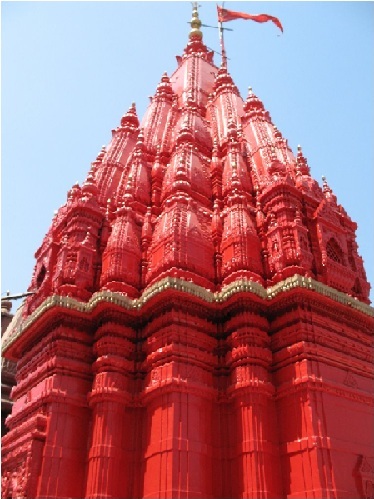
Durga Kund Mandir is a Hindu temple dedicated to the goddess Durga in Varanasi, Uttar Pradesh, India. The temple is situated near the Sankat Mochan Hanuman Temple. The temple was built in the 18th century by Rani Bhabani of Natore.
The temple is a two-storey structure with a red sandstone exterior.
The temple is a popular pilgrimage destination for Hindus from all over India and the world. Devotees come to the temple to seek Durga’s blessings for protection, strength, and wisdom. The temple is also a popular tourist destination and is open to visitors of all faiths.
The temple is surrounded by a large complex that includes a number of other temples, a guesthouse, and a library. The complex also has a pond, known as the Durga Kund, which is said to have healing properties.
The Durga Kund Mandir is a beautiful and serene place to visit. The temple is a testament to the rich history and culture of Varanasi.
Tulsi Manas Temple
Ah, the Tulsi Manas Temple, a treasure trove of devotion and literary magic!
Forget marble grandeur; Tulsi Manas Mandir is a symphony of devotion penned in stone. Here, Rama’s epic whispers from carved murals and echoes in the serene gardens. Imagine tracing Tulsidas’ footsteps, his quill once scribbling the Ramacharitmanas in this very haven.
Lose yourself in vibrant rituals, feel the thrum of chants, and watch offerings bloom with blessings. Learn from scholars illuminating ancient verses, then delve into the depths of your own soul under the watchful gaze of Rama.
For within this white-marble poem, every step is a pilgrimage, every breath a verse, and every moment a whispered prayer.
Ready to unlock the secrets of devotion in this literary sanctuary? Come, let Tulsi Manas Temple guide you on a journey within.
Kal Bhairav Temple

The Kal Bhairav Temple, dedicated to the fierce aspect of Lord Shiva, is one of the oldest and most fascinating temples in Varanasi. Located in the narrow alleys of Vishweshwarganj, it’s believed to be the protector of the city.
Inside the holy room of the temple sits a cool statue of Bhairava. He looks super strong, wearing a necklace of skulls and holding a stick made from peacock feathers. People give him special drinks and sometimes even meat!
Why? Because Bhairava is like a powerful force that can break things down and change them for the better. He’s so strong, even death is scared of him! That’s why people come here to ask for his help when they’re feeling afraid or stuck.
The whole temple feels full of this special energy, drawing people from everywhere to visit.
The temple is open from 4:00 AM to 11:00 PM, with special aartis held throughout the day.
Visitors can participate in unique rituals like offering “tot” (liquor) to the deity.
Be prepared for the crowded and vibrant atmosphere within the temple complex.
Annapurna Mata Temple
Annapurna Mata Temple is one of the most famous Hindu temples in the holy city of Varanasi. It is dedicated to the goddess Annapurna, who is the Hindu goddess of nourishment and is a form of the goddess Parvati. The temple is located in the Visheshwarganj neighborhood of Varanasi, just a short walk from the Kashi Vishwanath Temple.
The temple was built in the 18th century by the Maratha Peshwa Bajirao I. The main shrine of the temple houses a golden idol of Annapurna, who is depicted as a beautiful woman with four arms. She holds a bowl of rice in one hand, a ladle in another, a lotus in a third, and a vessel of water in the fourth.
The temple is built in a traditional Hindu architectural style.
The main shrine of the temple is made of marble and is decorated with intricate carvings.
The temple complex also houses a number of other shrines dedicated to other Hindu deities.
The temple is open to the public from 5:00 AM to 10:00 PM.
Gauri Shankar Temple
Gauri Shankar Temple is a Hindu temple dedicated to the divine couple of Lord Shiva and Goddess Parvati. It is located in the Gaighat locality of Varanasi, India. The temple is also known as Gopreksheshwar Mahadev Temple.
The temple was built in the 18th century by the Maratha Peshwa Bajirao I. The main shrine of the temple houses a murti (idol) of Lord Shiva in the form of Gopreksheshwar, which means “the protector of cows”. The idol is made of black stone and is adorned with a garland of skulls and a necklace of snakes. The temple complex also houses a murti of Goddess Parvati in the form of Gauri.
The temple is a popular pilgrimage destination for Hindus from all over India and the world. Devotees come to the temple to pray for blessings for good health, prosperity, and a happy married life. The temple is also a popular tourist destination, and visitors can enjoy the beautiful architecture and atmosphere of the temple complex.
Bharat Mata Temple

Bharat Mata Mandir, or the Mother India Temple, is a Hindu temple located in Varanasi, India. It is dedicated to Bharat Mata, a personification of India as a mother goddess.
The temple was built by philanthropist and freedom fighter Shiv Prasad Gupta in the early 1920s. It was inaugurated by Mahatma Gandhi in 1936.
The temple is unique in its design. It is a five-sided structure with five pillars, each representing one of the five elements: earth, water, fire, air, and space. The interior of the temple is decorated with intricate carvings and paintings depicting scenes from Indian history and mythology.
The centerpiece of the temple is a large marble map of India. The map is carved to scale and depicts the country’s mountains, rivers, and coastline. The map is also filled with water on Independence Day and Republic Day to symbolize the unity and prosperity of India.
The Bharat Mata Mandir is a popular tourist destination in Varanasi. It is a symbol of Indian nationalism and patriotism.
Mrityunjay Mahadev Mandir
Mrityunjay Mahadev Mandir, also known as the Temple of the Conqueror of Death, is a Hindu temple dedicated to Shiva located in the holy city of Varanasi, India. The temple is believed to be the place where Shiva drank the poison Halahala, which was churned from the ocean of milk.
The temple is located in the Daranagar area of Varanasi, about 1.7 kilometers from the Gola Ghat. The temple complex is enclosed by a high wall and consists of a main temple, a smaller temple dedicated to Hanuman, and a well.
The main temple is a two-story structure with a pyramidal roof. The sanctum houses a lingam of Shiva. The walls of the temple are decorated with intricate carvings depicting scenes from Hindu mythology.
The smaller temple is dedicated to Hanuman, the monkey god. The temple is located to the left of the main temple.
The well in the temple complex is believed to have medicinal properties. It is said that bathing in the well can cure diseases and prolong life.
The Mrityunjay Mahadev Mandir is a popular pilgrimage site for Hindus. The temple is especially crowded during the month of Sawan, when devotees come to pray for rain and prosperity.
Shri Tilbhandeshwar Mahadev Mandir

Shri Tilbhandeshwar Mahadev Mandir, also known as Tilbhandeshwar Mandir, is one of the oldest and most famous temples in the holy city of Varanasi, India.
Ratneshwar Mahadev Temple
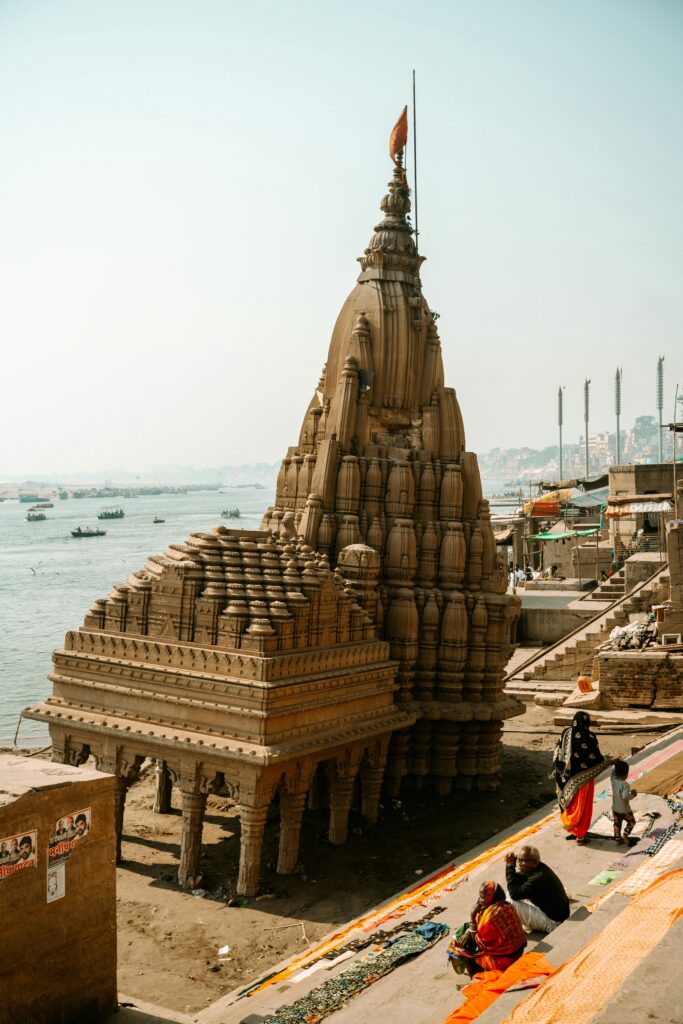
Fond of the Leaning Tower of Pisa? Varanasi has got you covered here.
WIth a dramatic 9 degree tilt, this temple sits fashionably on the banks of Ganga. We are talking about The Ratneshwar Mahadev Temple, also known as the Leaning Temple of Varanasi, is one of the most photographed structures in Varanasi.
Built sometime in the mid-19th century, the temple’s exact origins remain shrouded in mystery. Legends attribute its tilt to divine intervention, while others point to foundation issues due to its proximity to the Ganges River. The temple’s sanctum even gets submerged during the monsoon season, adding to its unique character.
Despite the tilt and occasional submersion, the Ratneshwar Mahadev Temple remains an active place of worship, attracting pilgrims and tourists alike. Its enduring presence serves as a testament to the faith and resilience of the people of Varanasi.

Kanthwala Mandir
Nestled along the serene Lalita Ghat in Varanasi lies the Kanthwala Mandir, also known as the Nepali Mandir or Mini Khajuraho.
Boasting a rich history and intricate architecture, this temple dedicated to Lord Shiva holds significant allure for both pilgrims and art enthusiasts.
The king of Nepal built this temple in the 19th century. This temple resembles Pashupatinath Temple in Kathmandu. Terracotta, stone, and wood come together to create a visual masterpiece.
The main draw, however, lies in the temple’s striking features. Its pagoda-style construction rises majestically, adorned with ornate carvings and sculptures.
These intricate details, reminiscent of the Khajuraho Group of Monuments, earned it the nickname “Mini Khajuraho.” The craftsmanship on display, showcasing scenes from mythology and daily life, offers a glimpse into Nepal’s artistic heritage.
Beyond its beauty, the Kanthwala Mandir is a center of religious significance. Devotees offer prayers to Lord Shiva, seeking blessings and spiritual solace.
The temple also stands as a symbol of the strong cultural ties between India and Nepal.
Lalita Gauri Mandir

Built in the early 19th century by Rana Bahadur Shah, this temple is dedicated to the goddess Lalita Gauri, considered the third form of Parvati, the divine consort of Shiva.
The temple boasts a tranquil yet powerful aura. Its whitewashed exterior and red-ochre accents reflect the traditional Hindu temple architecture.
Inside, devotees are greeted by the serene murti (idol) of Lalita Gauri.
Beyond its aesthetic beauty, Lalita Gauri Mandir holds immense significance for Hindus.
Worshiping Lalita Gauri is believed to bestow blessings of wealth, prosperity, and happiness. Aswin month (September-October) is particularly auspicious, especially the second day after Poornima (full moon), for special poojas attracting many devotees.
The temple also houses other deities like Kashi Devi and Bhagirath Devi, enriching the spiritual experience.
Visitors can combine a visit to Lalita Gauri Mandir with exploring other nearby temples, immersing themselves in the vibrant tapestry of Varanasi’s spiritual life.
Vishalakshi Temple

This temple is set on the banks of Ganga near Kashi Vishwanath temple, known for Mata Parvati’s large eyes.
It is one of the 18 Shaktee Peethas, and it is believed that Mata Parvati’s earring had fallen here; hence, it is considered immensely sacred.
Unlike most Varanasi temples, Vishalakshi boasts a unique Dravidian architectural style, evident in the ornate gopuram gateway and intricately carved mandapam.
Two idols of Vishalakshi reside within: the original, installed centuries ago, and another by Adi Shankaracharya.
Compared to larger temples, Vishalakshi offers a calmer, less crowded ambiance, ideal for quiet contemplation and prayer.
Sankata Devi Mandir
Sankata Devi Mandir, nestled in the heart of Varanasi, isn’t your typical bustling Hindu temple. Dedicated to Goddess Sankata Devi, the “Dispeller of Troubles,”
Goddess Sankata Devi, depicted as a young woman with four arms, embodies hope and strength. Devotees, often women facing personal struggles, offer prayers, light lamps, and tie sacred threads seeking the Devi’s blessings.
Tuesdays and Fridays are particularly auspicious, drawing large crowds.
According to the local legend, it is said that a merchant with misfortune came here and asked for refuge and received divine intervention. The news spread and attracted a lot of devotees asking solutions for their Sankat (problems).
Frequently Asked Questions About Temples In Varanasi
Which are the most important temples in Varanasi?
- Kashi Vishwanath Temple
- Sankata Devi Temple.
- Annapurna Temple
- Kala Bhairav Temple.
- Tulsi Manas Temple
What are the best times to visit the temples in Varanasi?
- Early mornings: Less crowded and offer a peaceful atmosphere.
- Evenings: attend the mesmerizing Ganga Aarti ceremony performed at various ghats.
- Festivals: During festivals like Maha Shivaratri and Holi, experience the vibrant energy and rituals.
What dress code should I follow while visiting the temples in Varanasi?
- Dress modestly, covering shoulders and knees.
- Remove shoes before entering the sanctum.
- Avoid wearing revealing or transparent clothing.
What are some things to keep in mind during temple visits?
- Be respectful of religious practices and maintain peace and quiet.
- Photography is often restricted within the sanctum
- Do not touch deities or idols.
- Be mindful of local customs and traditions.
Why is Varanasi called a city of temples?
With over 2,000 temples, from ancient shrines to bustling modern ones, Varanasi overflows with spirituality. From holy Ganga baths to daily rituals, every corner breathes devotion, earning it the well-deserved title of ‘City of Temples’.
You May Also Like->
- Best 18 Places to Visit in Agra

- 15 Best Things To Buy In Varanasi

- Manikarnika Ghat: A Fascinating Journey Through Life and Death

- My Enchanting Solo Trip to Varanasi
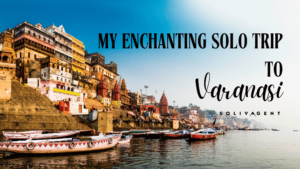
- 10 Best Things to do in Varanasi, Uttar Pradesh

- 9 Top Places to Visit in Sarnath
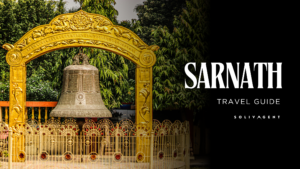
- Top 15 Temples in Varanasi You Must Not Miss!
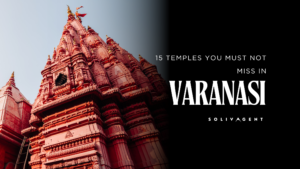
- Kashi Vishwanath Temple- A Complete Guide
